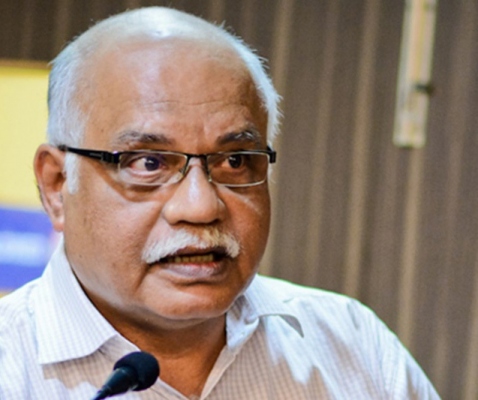The new education policy has envisaged a friendly approach to the evaluation of learners; this is complete departure from the traditional system of examinations

Such broad and multiple options attempt to encompass all in the formal school system by making education relevant. Rigid and limited choices restrict effective access. It also explains the high rate of school drop-out. The challenge would be to implement relevant vocational courses with adequate skill content and practical internship programme so that they prove their utility and usefulness.
The thought of early childhood care and education (ECCE) and the commitment to create guidance materials for home learning from the age of three to six so as to facilitate the preparatory stage of the child is welcome. Scientific learning materials will definitely contribute to the healthy and holistic growth of the child.The new education policy reaffirms that the mother-tongue is the ideal medium of instruction at the primary level of education. This is a universally recognized view and not a new finding. The challenge here is to win the acceptability of the parents who perceive future losses and hindrances for their children if the medium at primary stage is mother-tongue, vernacular or local language. The solution can only be through a strong grounding in English along with the local language. Every regional language spoken in India is the language of the nation. They are no less than Hindi or any other language finding a place in the 8th Schedule to the Indian Constitution.English is perceived as the global currency today.
The English-medium schools are the fastest growing educational institutions in India. Today, it is erroneous to regard it as a colonial and foreign language. It is a paradox that Sanskrit which is spoken and understood by less than 50,000 of our population is regarded as a national language on the twin grounds of it belonging to a proverbial golden past and also being considered as a sacred language to establish communication with the Gods.
Irrespective of what the new education policy states in respect of the mother-tongue, English would stand well-ensconced as the aspirational language. It would be advisable to consider English language as native to India so that students have a choice of learning a foreign language and the local language in the three-language formula.The issue of utmost significance is regular renovation in curricula, course content and teaching-learning methodologies. It is a welcome sign that early and primary education would solely be through play methods and adopting the ‘learning by doing’ approach.
The expansionary meaning provided to the curriculum to include what earlier would go under the nomenclature of co-curricular and extra-curricular augurs well for the overall development of the young learners. Added to this is the proposed experiential approach to learning of the curriculum. Activity-based learning sharpens the faculties of thinking, creativity, dialogue, debate and teamwork. The challenge is to make it happen through effective teacher training and motivation. Otherwise, it would remain safe and secure in the policy document with no results at the ground level.The new education policy has envisaged a friendly approach to the evaluation of learners.
This is a complete departure from the traditional system of examinations which centered on promotions and failures. We start from the stage of no examinations, no school bag and no rigid syllabus in the Basic Learning Stage. A credit system is sought to be introduced for higher levels. No student is expected to waste any year with a failed marking as there would be provision for repeat evaluation to improve on the scores and credits in the same year.There are also new proposals offering alternative models and multiple paths to tackle the challenge of growing numbers. The State and National Institutes of Open Schooling is one such track to be strengthened. The policy also envisages public-private partnership which is rechristened as a public-philanthropic partnership.
Autonomous schools and educational institutions would get encouragement. Of course, there are allegations of education turning elitist but we need multiple paths on our road to meet the challenge of quantity and quality.The new education policy document also proposes to bring all regulatory mechanism under one banner. So, the future will see the dismantling of University Grants Commission (UGC) and All India Council of Technical Education resulting in formation of the Higher Education Council of India (HECI) with four verticals to deal with regulations, accreditation, grants and general education.
Though the new education policy offers reforms to make education child-centric offering a good degree of flexibility in methodologies, evaluation and choice of courses, there are real challenges at the implementationstage.We fall abysmally short to reach a public spending of 6 per cent of our GDP on education. If we desire to take the nation to be the global knowledge superpower, the spending should be in the range of 8 to 10 per cent.We hail the new education policy as a forward-looking document directed to make our young learners global citizens.
The same government takes pride in distorting history and social issues in school textbooks. Laying the foundation stone of Ram Mandir at Ayodhya, the Prime Minister tells the nation that 5th August is as important as 15th August (Independence Day). If we make the remnants of the past as the agenda and pride of the future, any reformist policy falls like a pack of cards.(The writer is an educationistand political commentator)